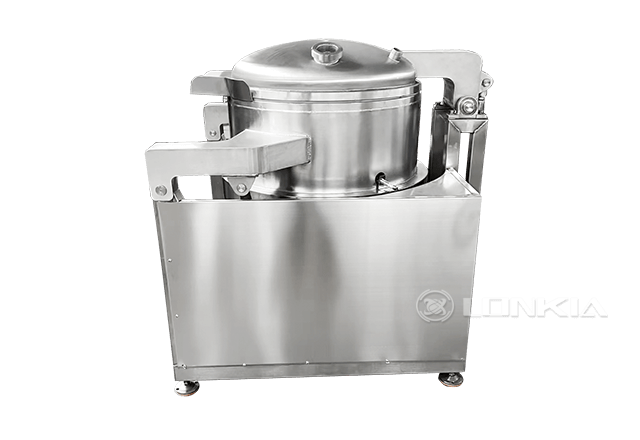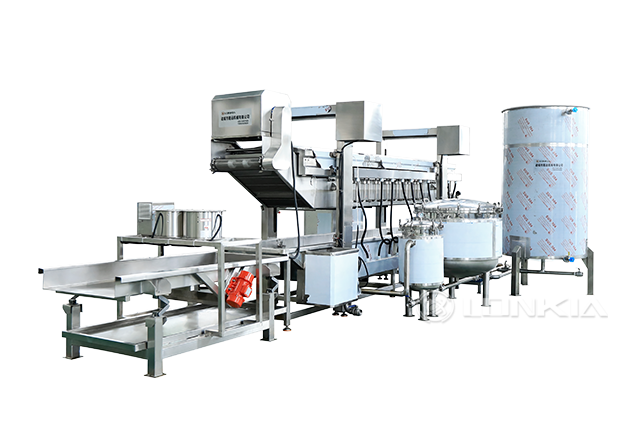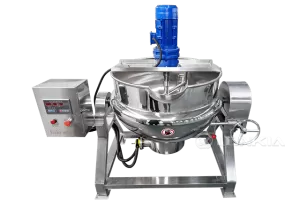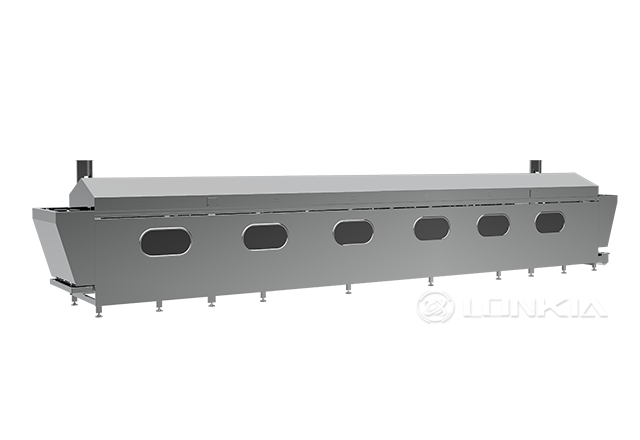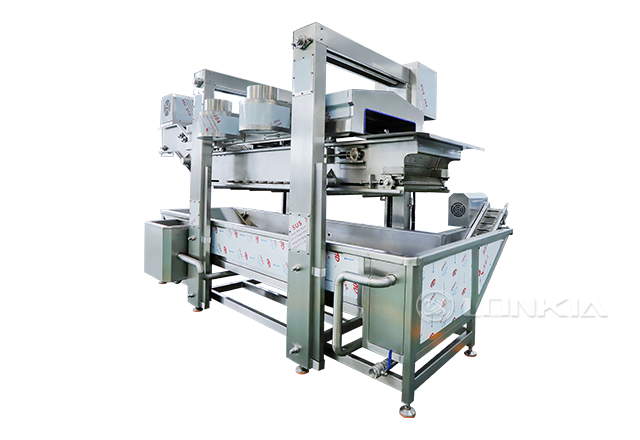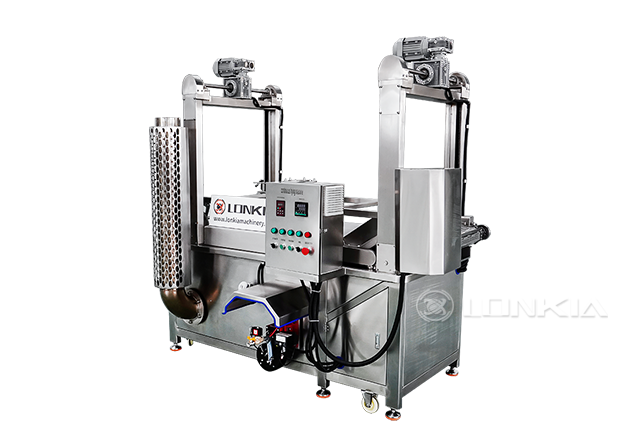The potato chips production industry is highly competitive and requires a balance of quality, efficiency, and cost-effectiveness. While producing perfectly crisp and flavorful potato chips might seem straightforward, there are numerous challenges that manufacturers must overcome. From maintaining product consistency to managing production costs, these challenges can affect both the quality of the chips and the profitability of the business. In this blog, we’ll discuss the common challenges in potato chips production and how to address them effectively.
Inconsistent Potato Quality
Challenge:
One of the most significant challenges in potato chips production is the variability in potato quality. Potatoes are a natural product, and factors such as weather conditions, soil quality, and storage can affect their size, texture, and sugar content. Potatoes with inconsistent quality can lead to variations in the final product, such as chips that are either too soggy, too oily, or too dark.
Solution:
To overcome this challenge, it is crucial to source high-quality potatoes consistently. Building strong relationships with reliable potato suppliers and monitoring the quality of incoming potatoes is essential. Additionally, investing in potato quality inspection systems can help identify and separate subpar potatoes before they enter the production line. Implementing potato storage solutions that maintain optimal temperature and humidity can also help preserve quality and reduce spoilage.
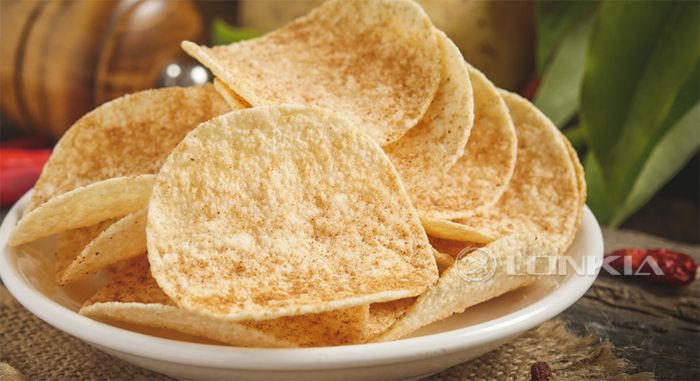
Excessive Oil Absorption
Challenge:
Excessive oil absorption during frying is a common problem in potato chip production. Chips that absorb too much oil can become greasy, heavy, and unappetizing to consumers. High oil absorption also increases production costs, as more oil is required for frying, and it can impact the product’s shelf life.
Solution:
The key to reducing oil absorption is ensuring that the frying process is optimized. One effective solution is to control the temperature of the frying oil carefully. Frying at the right temperature (typically between 350°F to 375°F or 175°C to 190°C) allows chips to cook quickly, forming a crisp exterior while preventing excess oil absorption. Additionally, using a continuous frying system with precise temperature control can maintain consistent frying conditions. After frying, using air blowers or centrifuges to remove excess oil can further reduce oil content.
Inconsistent Product Texture
Challenge:
Achieving a consistent texture in potato chips is another challenge. Factors such as potato variety, slice thickness, and frying time can all contribute to variations in the texture of the chips. Some chips may be too soft or chewy, while others may be overly crunchy or too thin.
Solution:
To overcome this challenge, manufacturers need to standardize critical factors such as slice thickness, frying time, and oil temperature. Using advanced slicers with adjustable settings can ensure uniform potato slices, which is essential for consistent frying. Implementing automated control systems to regulate frying time and oil temperature can help maintain a consistent texture across batches. Finally, performing quality control checks at various stages of production ensures that any issues with texture can be identified early and corrected.
High Production Costs
Challenge:
High production costs are a constant concern in the potato chips industry. The costs of raw materials (such as potatoes and oil), labor, packaging, and energy can quickly add up, affecting profit margins. Additionally, maintaining equipment, handling waste, and ensuring food safety compliance contribute to ongoing operational expenses.
Solution:
To reduce production costs, manufacturers can focus on improving operational efficiency. For example, investing in automated production lines can reduce labor costs and improve throughput. Upgrading to energy-efficient equipment, such as oil filtration systems and continuous fryers, can also help reduce energy consumption. Recycling oil and implementing waste reduction practices can lower raw material costs. Regular equipment maintenance helps avoid expensive repairs and downtime, ensuring that production runs smoothly. Finally, analyzing the supply chain and negotiating better deals with suppliers can help reduce raw material costs.
Maintaining Consistent Flavor
Challenge:
Potato chips are all about flavor, and maintaining consistent seasoning across batches is crucial for customer satisfaction. However, achieving even seasoning distribution and preventing clumping or uneven flavoring can be challenging, especially when dealing with large production volumes.
Solution:
The key to consistent flavor application lies in proper seasoning equipment and technique. Using automated seasoning applicators that can uniformly coat chips ensures that every chip receives the correct amount of seasoning. Some machines even allow for the precise control of seasoning spray, preventing over-seasoning or under-seasoning. After seasoning, using tumblers or rotating drums to mix the chips ensures that the seasoning is evenly distributed across the entire batch. Regularly testing product samples for flavor consistency can help ensure that the final product meets the desired standards.
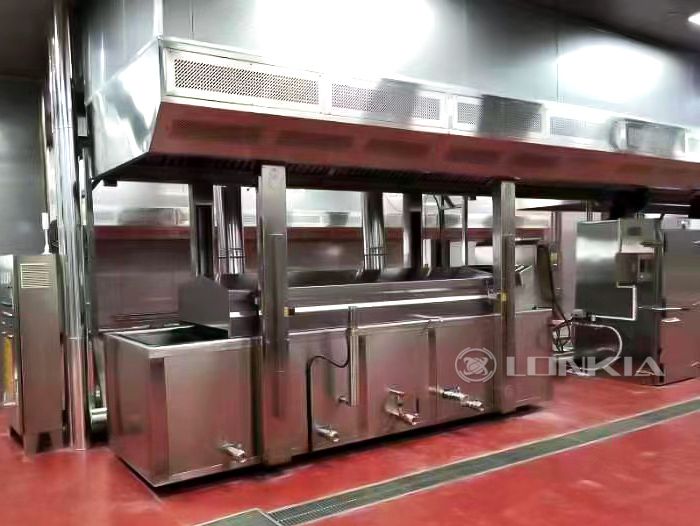
Quality Control and Food Safety Compliance
Challenge:
Maintaining consistent product quality while adhering to food safety regulations is a major challenge for potato chips manufacturers. Food safety standards, such as those related to oil quality, hygiene practices, and ingredient sourcing, must be met consistently to avoid product recalls and legal issues.
Solution:
To ensure compliance with food safety standards, manufacturers should implement strict quality control measures at each stage of production. This includes inspecting raw potatoes for quality, monitoring oil quality and temperature, and performing regular hygiene checks. Automated systems that track temperature, humidity, and other key production variables can help maintain consistent quality. Additionally, training staff in food safety protocols and regularly auditing the production process ensures that all safety standards are met and upheld.
Packaging and Shelf Life Issues
Challenge:
Packaging plays a crucial role in maintaining the freshness and shelf life of potato chips. Improper packaging can lead to moisture absorption, loss of crunchiness, and a shortened shelf life. Additionally, the packaging process itself can be inefficient, leading to waste or higher costs.
Solution:
To address packaging and shelf life concerns, manufacturers should use high-quality, airtight packaging materials that protect the chips from moisture and air. Modified atmosphere packaging (MAP) technology can extend the shelf life by reducing oxygen levels and preserving freshness. Automated packaging machines can also improve efficiency, reduce waste, and ensure that bags are sealed tightly. Furthermore, regularly testing the shelf life of packaged products helps ensure that chips stay fresh for as long as possible.
Conclusion
Potato chips production comes with its share of challenges, from maintaining consistent quality to managing costs and adhering to food safety standards. However, by implementing the right technology, optimizing production processes, and focusing on quality control, manufacturers can overcome these challenges and produce high-quality, cost-effective potato chips. With the right approach, you can improve product consistency, reduce waste, and ultimately achieve greater profitability in the competitive potato chips market.
At LONKIA Machinery, we specialize in providing advanced equipment and solutions for the snack food industry. Contact us today to learn how we can help improve the efficiency and quality of your potato chips production process.


